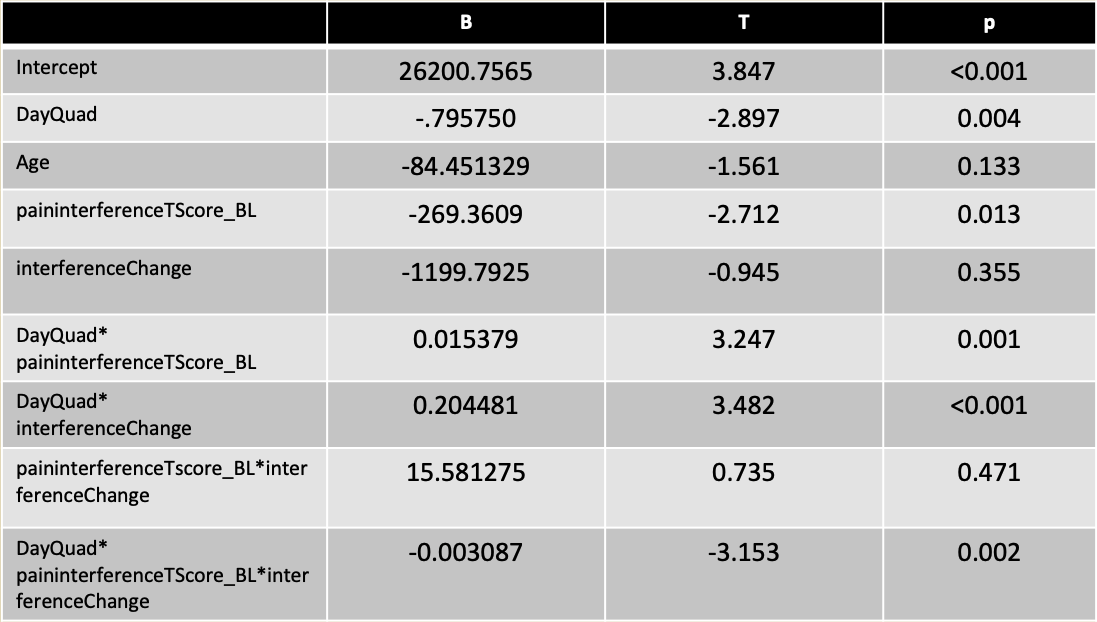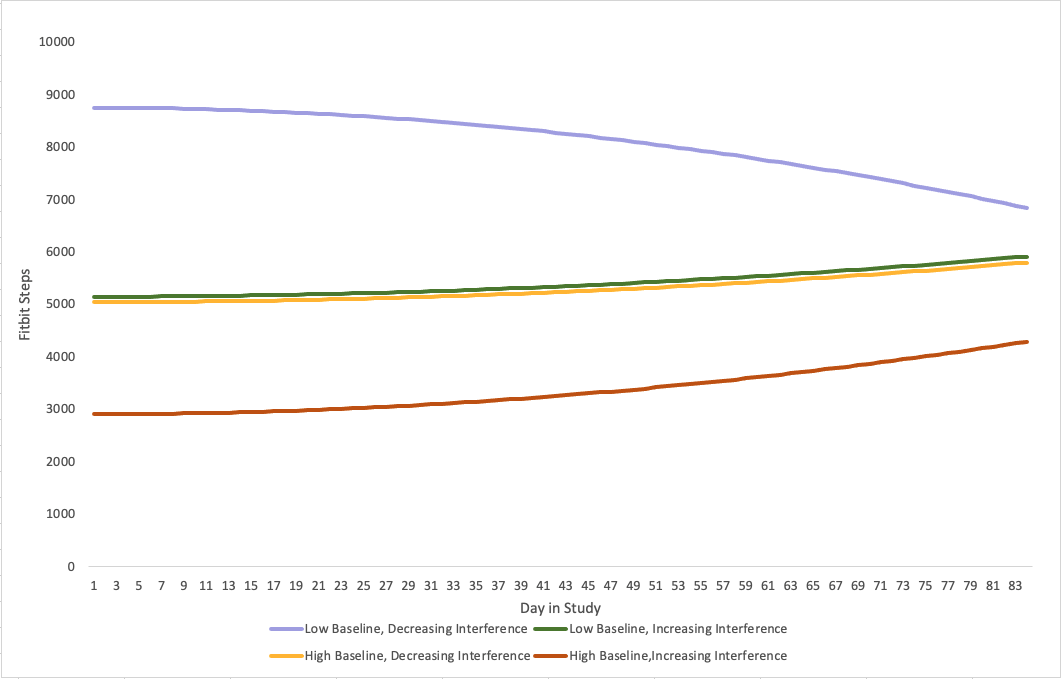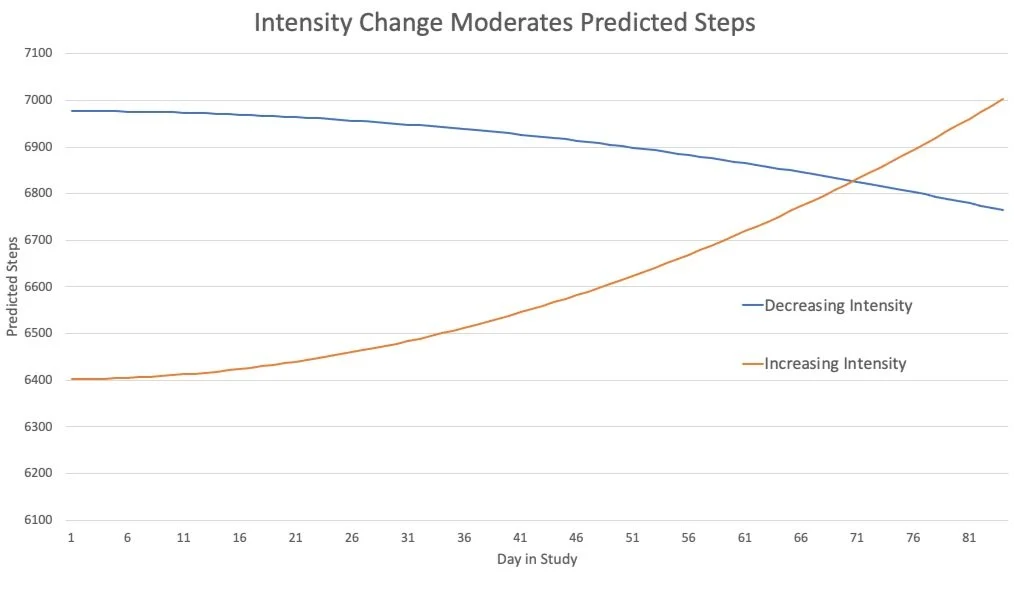Change in Daily Steps in a Remote Delivered Program in Older Adults with Chronic Pain
Justin Robison, Jason Fanning, PhD
Presented at Southeast ACSM Chapter Meeting on February 24th, 2023
Key findings:
-How much pain interfered with one’s daily life at the beginning of our study impacted how much steps changed in the context of our intervention
-How much pain interference changed during the study impacted how much steps changed as well.
Background:
The experience of chronic pain is both a cause and consequence of excess sitting and insufficient volume of physical activity. The Mobile Intervention to Reduce Chronic Pain and Improve Health-II (MORPH-II) trial aimed to develop a remote PA intervention focused on moving more, more often to meet the unique needs of older adults with chronic pain. The purpose of this study was to identify trajectories of change in daily Fitbit-measured steps among MORPH-II intervention participants.
Methods:
Men and women from across North Carolina were randomly assigned to a 12-week remote group-mediated physical activity intervention (MORPH) or a minimal contact control. The MORPH condition received an iPad equipped with Zoom and a study-specific mHealth app, a Fitbit, and wireless scale. Participants engaged in weekly small group meetings led by a professional behavioral coach via Zoom. Real-time Fitbit and scale data were integrated into a set of mHealth tools based in social cognitive theory designed to enhance social connection and to promote movement throughout the day. Participants completed the PROMIS 8-item pain interference scale at week 0 and week 12 via phone. We fit a series of multilevel models to investigate trajectories of change in steps among those in the MORPH condition and whether these trajectories are affected by pain interference.
Results:
Participants (N=18) were 68.27 ± 8.44 years of age on average, 83.3% white, and 77.8% female. The best fitting model explained 39.0% variance between participants and 3.1% variance within participants. This model was adjusted for age and included a three-way interaction between quadratic day in the study, baseline pain interference, and change in pain interference (B=-0.031, p = 0.002). Plotting of predicted values indicates that lower baseline pain interference is associated with greater steps overall and that individuals tended to increase steps over time in response to the program, except for those with low baseline pain interference that improved.
Estimates of Fixed Effects
Discussion:
The MORPH intervention has been previously published and focuses on a unique group-mediated behavioral intervention targeting the accumulation of physical activity through the day. This analysis (as part of a larger Master’s thesis) aimed to investigate Fitbit steps as a proxy for physical activity. The original MORPH trial saw improvements in pain intensity, body weight, physical function, and several markers of quality of life. The MORPH-II trial aimed to refine the original trial adding a pre-health student coaching model to understand daily PA prescription and associated mHealth tools, and shifting towards a fully remote delivery.
The Master’s Thesis aimed to take MORPH-II Fitbit data and develop a coding library of processing scripts allowing any research team (regardless of programming background) to take the high-resolution data of a Fitbit and process it out to useable metrics.
Upon processing with the updated dataset. the three-way interaction between quadratic day in study, baseline pain interference, and change in pain interference from baseline to 12 week followup was not significant. With the larger dataset we were able to investigate pain intensity.
When a model is run with predicted steps and change in PROMIS pain intensity, the graphed predicted values show that those individuals with pain intensity increasing from baseline to followup are more motivated to engage in the MORPH-II program of engaging in day long movement, hence this groups predicted step values increase as day in study increases.
About the author
Justin Robison is a second year graduate student at Wake Forest University. His profile is here


